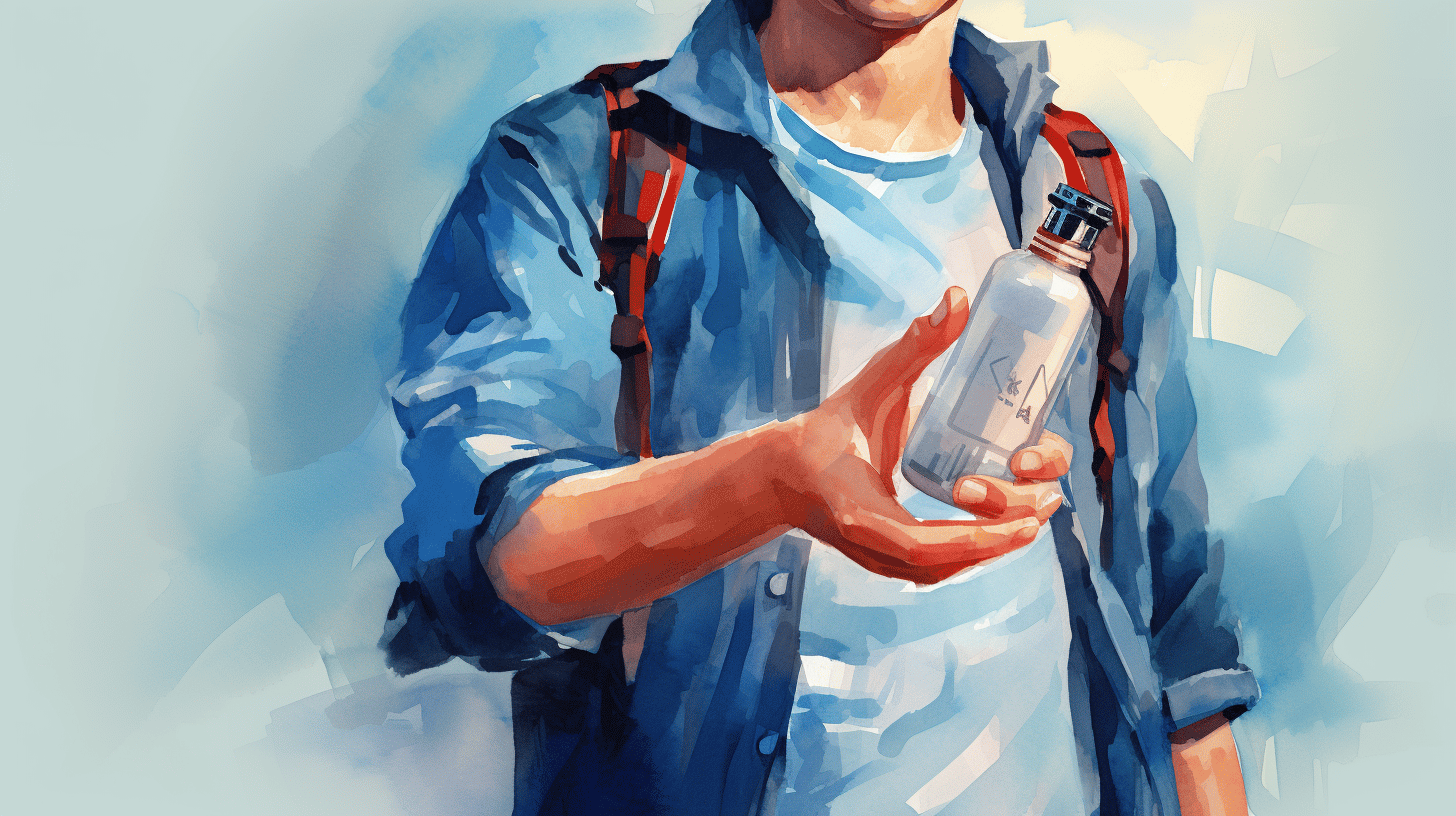Welcome to our comprehensive guide on family safety made easy. As parents, there's nothing dearer to us than ensuring the safety of our children. Whether it's at home, in the car, or the online world, we've always got to be on high alert to protect our little ones from potential harm. From understanding child safety concerns to learning about child protective services and the law, we've covered all grounds. We provide counseling to safeguard the digital life of your child, emphasizing the crucial role of car seats and safety measures at home, and underlining the importance of child protection laws. Offering you a multitude of pointers to enhance child safety, this guide is well-versed on a plethora of topics regarding this essential aspect of parenthood. Ultimately, our aim is to provide you with reliable, practical tips and tools that can significantly increase your child's safety. Are you ready to explore and take this journey with us?
Child Safety Concerns
Nothing matters to us more than the welfare of our little ones. As parents, educators, and community participants, it's our collective responsibility to ensure our children grow and thrive within the safe embrace of our homes, schools, and society at large. Unfortunately, we face several challenges in accomplishing this goal which could place our beloved children at risk.
Risk of Unrestrained Travel
Looking at the data, it's shocking to realize that an unrestrained child in a vehicle dramatically increases the risk of hijinks, or worse, fatality during a crash. A recent study in 2023 unveiled this harsh reality. Nevertheless, it's wholly preventable if we only take the time to apply the seatbelts and install approved car seats correctly. Something as simple as buckling up can save the lives of our precious cargo while we navigate through daily traffic. Caution and wisdom must always guide our driving habits.
Injuries at Home
What many might find alarming is the stark statistics that reveal how 59% of our children, aged 10 and under, have been injured right within the confines of their own homes. Unattended toys causing trips and falls, scalds from hot drinks, or cuts from sharp objects - these seemingly mundane incidents end up sending numerous little ones to the hospital every year. Let's work to make our homes a safer place for our little explorers.
Child Labor Violations
The increasing rate of child labor violations is an alarming concern. Just in 2023, there were 955 cases identified as child labor violations – a chilling 14% rise from the previous year. Our children deserve a childhood filled with learning, laughter, play, and innocence. They shouldn't be burdened with the weight of work or exploitation. A crucial step in mitigating such issues is to educate ourselves and our communities about the warning signs of child labor and implementing more robust legal protections for children.
Child Abuse Cases
The most heartbreaking issue that our children face is the sheer number of abuse cases. Approximately 600,000 kids suffer abuse each year in just the US alone. This grave statistic is a poignant reminder that we must remain vigilant as a society, ready to step in when a child shows signs of distress or harm. By staying informed, and intervening when necessary, we can be the difference in these children's lives.
Our commitment towards our children is relayed in a previous article about Family Safety Concerns. Just as we protect our own family, let's extend that protective instinct to every child, playing our part in ensuring their safety. Together, we can shape a future where our children thrive with safety, happiness, and the freedom to enjoy their childhood.
Digital Safety in the Age of Connectivity
We all are living in the age of connectivity, a digital era where our lives are intrinsically woven into the World Wide Web. But with this ever-increasing connectedness comes a heightened responsibility to ensure our digital safety. The beauty of this interconnected realm can quickly derail into a booby trap if not navigated with caution.
According to data, young people are the driving force of global connectivity, with a staggering 79% of 15 to 24-year-olds being online in 2023. This isn't surprising considering how integral technology and internet usage have become in our lives, shaping the way we communicate, learn, work, and entertain ourselves.
Yet, it begs the question - How safe are we in this digital world?
The Importance of Digital Safety
Digital safety goes beyond setting a strong password. In this highly vulnerable digital landscape, understanding the risks and taking measures to manage them is of essence. Here’s why:
- Identity Theft: Without proper digital safety measures, your personal and financial data can be easily compromised, leading to identity theft.
- Cyberbullying: The Internet, if not properly monitored, can become a fertile ground for cyberbullying, which can cause severe emotional harm.
- Dissemination of False Information: There's no denying that misinformation or disinformation can get amplified on the internet, impacting people's beliefs and actions.
“In this digital age, knowledge is power, but the real power lies in understanding how to use this knowledge responsibly and safely.”
Back in the day, the dangers of the digital world were largely unknown, and therefore, the significance of digital safety was underestimated. Yet today, as more and more young minds turn to the internet for their daily needs, it's our responsibility to ensure they are equipped with the right knowledge and resources to browse safely.
Thanks to the focus on digital safety, we've witnessed significant breakthroughs that ensure our online security. From two-factor authentication to VPNs, encryption technologies, and improved privacy settings, there are multiple protective layers that can keep us safe as we traverse this digital landscape. But remember - these tools are only as effective as our awareness about them. It's crucial we learn about these tools and teach the younger generation as well.
So let's pledge to be more informed and more vigilant as we revel in this age of connectivity, ensuring our online escapades are enriching and worry-free.
Child Protective Services and Intervention
When it comes to ensuring the well-being and safety of our children, community plays a crucial role. This truth becomes more significant when we acknowledge that compassion and vigilance are essential in recognizing and addressing situations where a child might be in peril. In delicate scenarios like these, Child Protective Services (CPS) often serves as the beacon of hope and defense for our little ones.
As distressing as it might be to accept, the need for child intervention is quite common. The report reveals that there were 3,096,101 children who were the subject of a child protective services response in the fiscal year. That's a staggering number, but it’s one that underscores the pivotal role CPS plays in our society—providing immediate help and long-term solutions to children in need.
So, what exactly does a child protective services response entail? It is a planned method to evaluate the safety of a child, recognize signs of maltreatment, and take necessary actions to guard the child from harm. CPS has two central responses:
- Investigation: CPS conducts an inquiry to determine if a child has been maltreated or is at risk of maltreatment. This response also reveals who is responsible for the mistreatment.
- Alternative Response: This response is applied in situations where there are concerns for the child's well-being, but these worries don't necessitate a formal investigation. Essentially, an alternative response aims to assist families in recognizing and addressing issues that could escalate into potential hazards.
However, the success of CPS goes beyond the numbers. It's measured in the enhanced living conditions of the rescued children, the relief in the eyes of their caregivers, and the increased chances for these kids to experience normal, healthy lives. The crucial work done by Child Protective Services fosters a network of protection and support, highlighting the importance of their intervention.
Yes, it's a complex task, and yes, it's a responsibility that carries enormous weight. But when it comes to protecting our children, every effort is worth it. So, let's continue to support and value the work CPS carries out each day. After all, the safety and happiness of our children are what shape a better future for all of us.
The Importance and Efficiency of Car Seats
We know how precious your little ones are to you. Their safety and comfort is a top priority for every parent, especially when it comes to car travel. That’s where car seats come into play. But have you ever wondered how crucial they really are? Let's delve into the importance and efficiency of car seats, and why they play such a critical role.
As parents or caregivers, we assume an enormous responsibility for the well-being and safety of our children. One of the ways we undertake this responsibility is by equipping our vehicles with reliable car seats. They're not only a legal requirement in the majority of countries, but they are also a life-saving necessity. Consider this fact: The National Highway Traffic Safety Administration estimates that car seats reduce the risk of fatal injury by a staggering 71% for infants younger than 1 year old. That's not a statistic we can ignore.
Let's break down why car seats are so essential:
- Safety: Car seats are designed to protect children's delicate bodies. Their key features like secure harnesses, side-impact protection, and head support aim to shield your precious cargo in case of a collision.
- Comfort: They also ensure that children are comfortable during the journey. Deep padded seats, adjustable headrests, and room for growth make sure your little one’s car ride is as cozy as possible.
- Prevention: Car seats prevent children from moving around in the car and causing potential distractions for the driver. Hence, they indirectly contribute to overall road safety as well.
Now you might wonder, is any car seat good enough? The answer is a plain no. As guardians, we need to choose car seats that are appropriate for the age, weight, and size of our child – and consistently ensure that they are correctly installed. Also, as children grow and develop, they require different types of car seats. Keep in mind the "car seat timeline" – infants require rear-facing seats, toddlers forward-facing seats, and older children need booster seats.
In the realm of parenthood, ensuring your child's safety while on the road might feel daunting. But remember that by prioritizing the use of appropriate car seats, we create a safer environment for our little ones and ourselves. So, buckle up and drive on, knowing your child's safety is well taken care of.
Enhancing Child Safety
In this vast world filled with countless risks and potential dangers, one key responsibility that falls on us as parents is to ensure our children's safety. This is the cornerstone of a child's growth and development. Teaching our kids to navigate the world safely is as comforting to them as it is crucial for our peace of mind.
Safety Measures at Home
The first place where children begin their exploration is at home. Hence, it is essential that we make our homes as safe as possible. One way to do this is to invest in a plethora of safety items designed to protect children in the home environment such as baby gates, window guards, and cabinet locks.
- Baby gates: For homes with stairs, baby gates can prevent toddlers from wandering towards dangerous spots.
- Window guards: Fitted to windows, these are especially crucial in high-rise homes to prevent any incidents.
- Cabinet locks: These prevent children from accessing potentially harmful items stored in cabinets.
But of course, it's not just about buying safety items. We also need to teach our children about the potential hazards around the house and guide them through safe exploration. Remember, the key lies not only in protecting but also in educating our children about safety precautions. For more detailed information, read this spectacular article on Safety Measures at Home.
Proper Use of Seatbelts and Child Restraints
Keeping children safe doesn’t stop at the threshold of our homes. Transport safety is another essential aspect we need to focus on. Seatbelts and child restraints in vehicles can significantly reduce injuries in the unfortunate event of a crash.
- Seatbelts: Teach kids the importance of always wearing seatbelts. It should become a habit for them, every time they get into a car.
- Child restraints: Depending on your child's weight and age, use the appropriate child restraint, whether it's a rear-facing car seat, a forward-facing car seat, or a booster seat.
By instilling these safety habits and using the appropriate equipment, we can ensure our children's safety both at home and beyond its confines. Most importantly, by educating our children about the potential hazards, we help them become independently knowledgeable about safety precautions, creating a more secure future for them.
Overview and Utilization of Child Protection Laws
It's an unfortunate truth, but not every child grows in a safe and nurturing environment. For these vulnerable young souls, a safety net becomes a vital necessity. Enter the world of child protection laws - designed to safeguard minors from harm and advocate for their rights. As we delve deeper into this subject, we aim to provide a detailed insight into the importance and implementation of these laws, and how they form a vital part of preserving a child's innocence, dignity, and future.
Child Protection Laws: An Overview
Child protection laws are legal statutes that aim to protect youngsters from various forms of harm, including physical, emotional, and sexual abuse, neglect, and exploitation. In a broad sense, these laws define the legal requirements that communities, parents, and caregivers must adhere to uphold and secure a child's physical and emotional well-being and development.
The specific structure and contents of child protection laws may vary across countries and states. However, all share a common goal - ensuring the safety and welfare of children. They can be further divided into the following categories:
- Physical abuse: Laws against causing physical harm or injury to a child.
- Psychological or emotional abuse: Laws against causing emotional harm, such as constant criticism, humiliation, or belittling.
- Sexual abuse: Statutes against engaging a minor in sexual acts, including molestation or exploitation.
- Neglect: Laws to prevent instances where guardians fail to provide necessary care or supervision.
The Importance of Child Protection Laws
"Every child has the right to feel safe, both within their home and the wider community," a statement set forth by the United Nations Convention on the Rights of the Child. This underlines the significant need for robust child protection laws.
Their importance cannot be overstated. These laws not only act to deter potential violators but also ensure justice for the victims of child abuse and neglect. They serve to create an environment conducive to a child's growth and development, free from fear and harm.
Implementing Child Protection Laws
Achieving full-fledged child safety requires more than just having legal provisions in place. It necessitates a robust system for implementing these child protection laws to ensure their effectiveness. This usually includes:
- Establishing responsible agencies to handle child abuse and neglect cases.
- Providing training to professionals interacting with children regularly, enabling them to identify potential cases of child abuse and take necessary actions.
- Raising public awareness about child protection laws and encouraging community participation.
It’s our collective responsibility to protect our young ones and provide them with a safe and loving environment. Understanding child protection laws, their importance, and their effective implementation is the first stride towards a world where every child thrives without fear. Indeed, it's in our hands to mold a future where the fundamental rights of every child are inviolate.
Conclusion
When it comes to the safety of our children, no measure is too extreme or too unorthodox. As we've walked together through this vast topic of child safety, we hope you have found valuable and actionable insights, providing a new perspective and a renewed determination to safeguard your family effectively. Remember that safeguarding your child isn’t just about vigilance, it's also about equipping them with the right tools and instilling a sense of self-assurance within them.
But let's not forget who holds down the fort while we worry and work on a safer world for our children. Our beloved pets, who create a comforting environment at home and become the best friends that our children need, deserve our attention too. At Empowered by Ashley, we truly understand the importance of pet safety alongside child protection.
Empowered by Ashley offers a range of products aimed at ensuring personal safety, including an innovative collection for pet safety. With Empowered by Ashley, you're not just purchasing products, you're investing in peace of mind for yourself and your entire family, from your little ones to your four-legged friends.
Our journey of establishing a secure atmosphere for your children and pets doesn’t end here. Let's incorporate what we've learned, focus on the safety of our loved ones, be empowered to take necessary actions, and strive towards building a safe haven for our families. That's the powerful message we aim to promote and the commitment we hold dear at Empowered by Ashley.
Frequently Asked Questions
-
What are some convenient solutions for child protection?
Some convenient solutions for child protection include: 1. Installing childproof locks on cabinets and drawers, 2. Using outlet covers to prevent electrical accidents, 3. Keeping cleaning products and medications out of reach, 4. Installing baby gates at stairways, and 5. Teaching children about stranger danger.
-
At what age should I start childproofing my home?
It's best to start childproofing your home before your child starts crawling or exploring their surroundings on their own. This usually occurs around six to ten months of age, but it's never too early to begin taking precautions.
-
How can I ensure my child's safety while using technology?
To ensure your child's safety while using technology, consider using parental control apps or software to monitor and filter their internet access. Additionally, establish clear rules and guidelines for safe online behavior and regularly communicate with your child about online risks.
-
Are there any child safety apps available?
Yes, there are several child safety apps available that provide features like GPS tracking, emergency alerts, and content filtering. Some popular child safety apps include Life360, Kaspersky SafeKids, and Qustodio.
-
How can I teach my child about personal safety?
You can teach your child about personal safety by discussing topics such as stranger danger, appropriate touching, emergency phone numbers, and safe behavior in different situations. Role-playing scenarios and using age-appropriate books or videos can also be helpful for teaching these concepts.
















Leave a comment
This site is protected by hCaptcha and the hCaptcha Privacy Policy and Terms of Service apply.